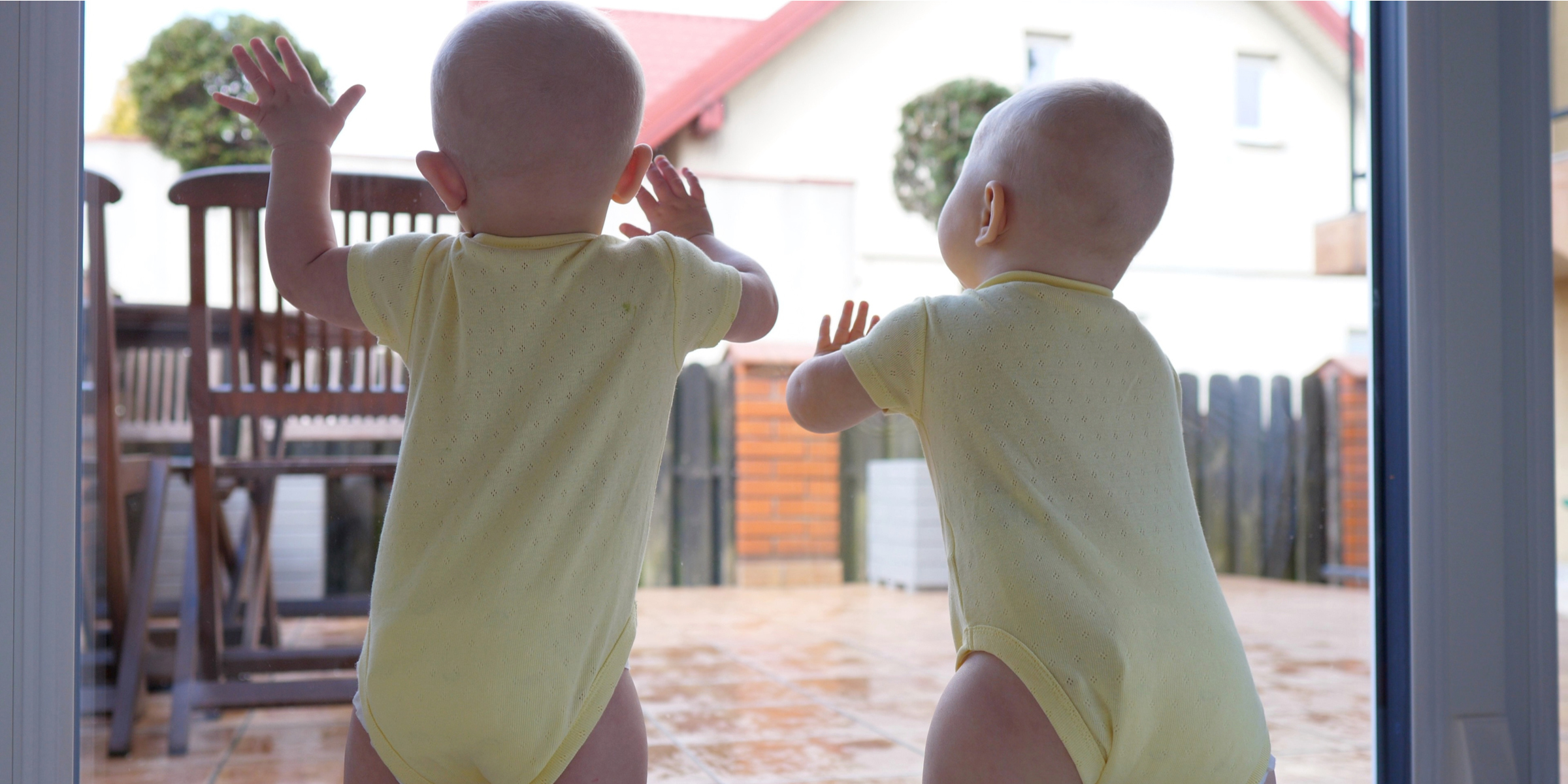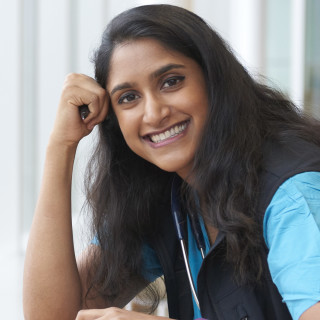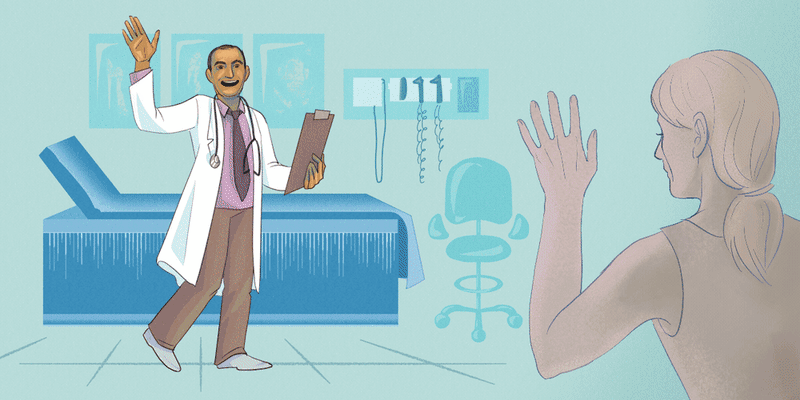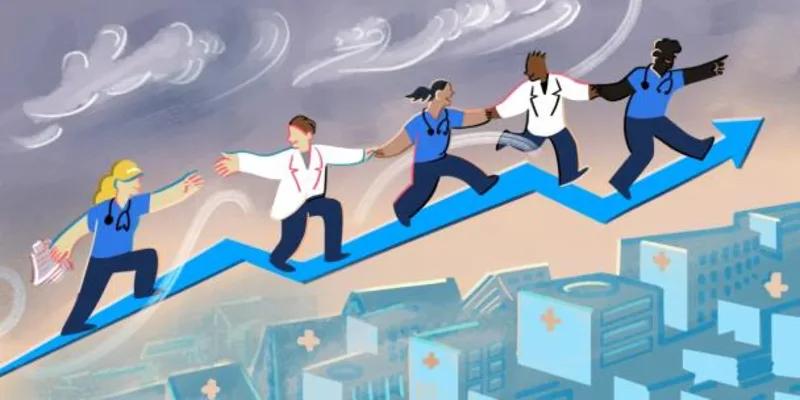
I half-jokingly, half-truthfully told my nurse that the COVID-19 test was worse than the labor. The vise-like contractions had been tamed by my epidural, expertly placed by a second-year resident who I had since elevated to a place of worship. The COVID-19 swab, however, had been jammed straight into my un-anesthetized nasal passages, which were swollen as a result of pregnancy and had already been bleeding earlier that day.
I was getting tested for COVID-19 (and thankfully tested negative) because I had found myself in a situation I would have never predicted: pregnant and giving birth to twins amidst a global pandemic — and at the end of my intern year, if that wasn’t stressful enough. It meant that in my third trimester, few people saw my rapidly growing belly in person. I awkwardly stood sideways in the camera frame at the behest of friends and family on Zoom calls. Rather than waddling down hospital halls, I was able to bounce on an exercise ball while working remotely. When people visited, my husband would put a folding chair for me at the top of our stairs and for the visitor at the bottom, so we could talk to each other through our masks, smiles imagined. When I found out I was having twins, people started exclaiming, “double trouble!” But no one expected the trouble 2020 would bring.
The phrase “it takes a village” is applied often to child-rearing, and it was the relative absence of the in-person village that struck me most in pregnancy and new motherhood. One day, I showed up at an ultrasound only to be told my husband could no longer enter the office. With twins, I had frequent appointments and ultrasounds — I now went to each one alone, praying that things would be alright, that I wouldn’t have to bear bad news or an emergency c-section without my husband next to me. I read novels quietly during non-stress tests as I listened to the background of their heartbeats. I lay in bed and counted their movements and wondered if my stuffy nose was COVID-19 or pregnancy hormones.
As a resident physician in pediatrics, I have witnessed many deliveries and been inside many nursery rooms. I always imagined both my mom and my husband would be at my delivery, but when the time came, I could only choose one partner. My husband held my hand as our boy and girl entered the world. I exhaled into my mask with each push — a surgical mask that had grown sweaty and discolored and probably useless from being worn throughout my 22-hour labor. Our smiles and our exhaustion are masked in the pictures of us holding our newborns in the delivery room. In the room that night, they were the only ones whose perfect faces were bared to their new world; open mouths drawing in air to freshly opened lungs.
In the nursery, afterwards, we cradled our babies and marveled at them. We video-chatted our families to convey the good news. I had always loved stepping inside nursery rooms where the new parents were surrounded by grandparents, siblings, flowers and balloons — I had imagined my Indian family might turn out in similar style. I expected my mother would be there to cajole me into eating Indian postpartum remedies. Instead, my husband and I woke up every hour to both babies’ cries, and groggily tried to latch them. I shoveled hospital cafeteria custard and pancakes into my mouth. Nurses and doctors, possible agents of COVID-19 transmission, came in sparingly and did not linger. We felt so alone in our new task: keeping our babies alive, now with the added threat of COVID-19.
When we went home from the hospital, we were lucky that my parents were able to quarantine and then drive to visit us. I collapsed with relief onto the couch. I was in pain, my husband was exhausted, but at least we were not alone. Sadly, due to travel restrictions and fear for their own health, my husband’s parents in India have still not been able to visit. Our babies are now eight weeks, and while they have spent time with my parents, they haven’t seen too many other people. We regard visitors with apprehension, rather than excitement. When I nuzzle their heads, I think about how that sense of touch, of belonging, is mostly limited to us. We feel the absence of the daily coconut oil massages my mother-in-law would have given them, the Hindi songs she would have sung. My parents wear masks when they’re with the twins, but I catch my mom quickly pulling the mask down to give the babies a smile they can actually see. She can’t resist, and I can’t blame her. In the period between six and 12 weeks, babies should make their first “social smile” in response to the smiling face of a caregiver. I wondered if they would be slower to smile when all they saw were masked faces.
But I learned to give them a coconut oil massage. My husband speaks to them in Hindi when they cry. And one day, they smiled with their entire faces, and everything in the world suddenly paled in comparison.
Many things are different now, but many things are still the same. We are still hostages in our own house to the equally demanding and adorable babies — our “quarantine” as new parents was inevitable anyway. Weekdays and weekends blur as we go through the cycle of feeding, diaper changing, sleeping, and repeat. The babies grow slightly chubbier, slightly bigger, slightly more alert each day. Their heads bob on my shoulder during Zoom calls, delighting the people who yearn to hold them close. Our village found so many ways to support us from afar. We receive daily packages of books, clothes, and diapers. We received a month of food through meal trains. Fellow new moms of the neighborhood formed an online group to share tips, pictures, and clothing.
Our babies, in their innocence, have never known a world without a pandemic. I cling to the hope that by the time they are old enough to remember things, the changes wrought by this pandemic will be reverted. I imagine a world where they can play freely in a sandbox, huddle on bean bags in the library, get kisses and hugs from friends and family, and see broad smiles unobstructed by masks. I hope that we can one day bring them on the 20-plus-hour journey by air to India, where they can learn the ambient smell of jasmine, hear the din of traffic, bear the blanket of summer heat, taste the unparalleled sweetness of a fresh, ripe mango, and be taken under the wing of a doting cousin. I yearn that they can experience the village who so desperately wants to raise them, in person. For now, I marvel at their expressions, the softness of their skin, the tiny protuberances of their fingers and toes. As much as I fear the outside world, and their vulnerability against it, they also give me hope. Amidst a time of confusion and fear, they arrived just as they were always going to arrive. They give hope of life amidst global pain, fear, and loss. And their village is waiting for them.
Click here to see more perspectives on COVID-19 from the Doximity network.
Click here for up-to-date news about COVID-19 on Doximity.
Image: DiMedia / shutterstock







